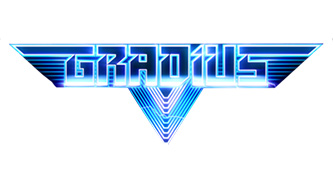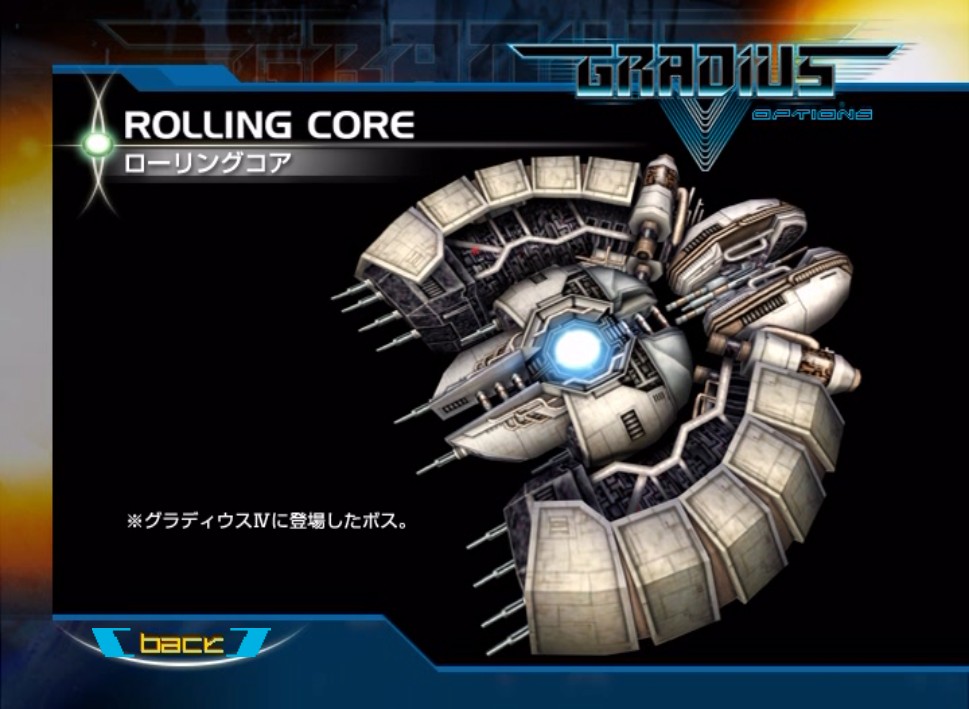

Making ReBirth look and sound retrograde provides it with no small amount of charm and gives the impression that it could slot somewhere into the timeline of the original trio of coin-ops. Whether this was a move brought about by file size limitations of the WiiWare service, or not, is unknown, but with hindsight it was certainly a good decision. Unlike the more recent entries in the series, ReBirth eschews polygons in favour of vintage-look 2D graphics. This is a trend that continues with the latest entry in the series, Gradius ReBirth. The fact that most of these follow-ups rarely strayed too far from the original game’s template underlines just how well-executed it was all those years ago. It introduced and popularised many features that are still evident in even the latest bullet-crazed shmups from Japan.Īs well as being heavily copied by others, it’s a game that has also given Konami a lot of mileage over the years, both in terms of direct sequels, and spin-offs.

This page uses Creative Commons Licensed content from Wikipedia ( view authors).Released in 1985 by Konami, the original Gradius was quite a revelation and hugely influential. Mission failure does not change game progress, but it prevents the player from getting the stage clear bonus.Īfter destroying the stage 15 boss, Appare Toride, the game ends if the stage layout is set to 1 loop, or the game continues to stage 1 with enemies firing more rapidly if the stage layout is set to endless. The mission is failed when there is at least one core among all boss units are not destroyed within the time limit. If stage layout is set to endless, the player can also choose round number 1, 2, or 3, with a higher round being more difficult.ĭuring any boss battle, there is an invisible time limit for each battle. Wingmen add some extra firepower, but are vulnerable to enemy fire.Īs an arcade board option, Stage select allows the player to start the game at stage 1, 6, or 11. A small golden plane icon flies down the screen at certain times which releases a wingmen icon. The option of wingmen is much more present in this game than others in the series. However, players start with only one life, and the game sparingly gives health boosts. The plane has a health bar which decreases after every hit. The health system in the game also works unlike the previous games in the series. The game also has the standard bomb button, which causes Tomahawk Missiles to fly up the screen doing major damage to any enemies they hit. By holding the fire button down, the charge bar will fill, and when full, the plane will fly up and become temporarily invincible. The game borrows from 19XX in that it has a form of charge up system. Despite the opening description of the plane stats, both planes operate equally, and are only available to the first or second player respectively. Unlike its predecessor, 19XX: The War Against Destiny, the game plays more like the early games in the series. The objective of every level is to shoot enemy planes, tanks, trains, turrets, battleships, and defeat the boss after each level. The arcade operates and plays like most standard shooters. The de Havilland Mosquito and Kyushu J7W are not used in this game, being replaced by the other planes. It is the sequel to 19XX: The War Against Destiny and uses the arcade cabinet CP System II. The game takes place in the heated battles of 1944 during the Second World War as two super ace pilots, P-38 Lightning and Mitsubishi A6M Zero are attempting to defeat an entire army.
GRADIUS REBIRTH LOOP 2 SERIES
The game is the 5th of a series of World War II vertical shooters made by Capcom the 1940 series.

Unlike previous games, the programming for this arcade was done by a separate company called 8ing/Raizing. 1944: The Loop Master is a vertical scrolling shooter arcade game made by Capcom in 2000.


 0 kommentar(er)
0 kommentar(er)
